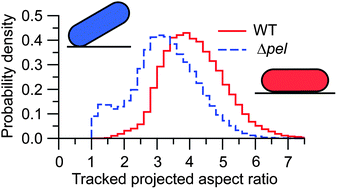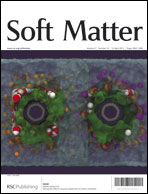Biofilms are surface-mounted, multicellular communities of microbes. Biofilms are often associated with chronic infections that resist treatment, evade the immune system, and damage host tissue. An essential characteristic of the biofilm state is that constituent organisms are bound in a polymeric matrix. This matrix gives the system spatial structure and clusters bacteria near each other, facilitating intercellular interactions. The Pseudomonas aeruginosa strain PAO1 is widely studied as a model biofilm-forming organism. The polymeric matrix of PAO1 biofilms is dominated by two bacteria-produced extracellular polymers, Pel and Psl. We use a combination of optical and atomic force microscopy to examine the roles of these polymers in very early biofilm development. In agreement with other researchers, we find that Psl mediates strong attachment to a glass surface. We find that Pel alone can mediate some attachment, but not as permanent as that mediated by Psl. Unexpectedly, we find that Pel promotes symmetric attachment, in the form of rod-shaped bacteria lying down flat on the surface, and that the presence of Pel makes attachment forces more short-ranged than they are with Psl alone. We suggest that these effects may result from synergistic interactions of Pel with the Psl polymeric matrix.

You have access to this article
 Please wait while we load your content...
Something went wrong. Try again?
Please wait while we load your content...
Something went wrong. Try again?


 Please wait while we load your content...
Please wait while we load your content...